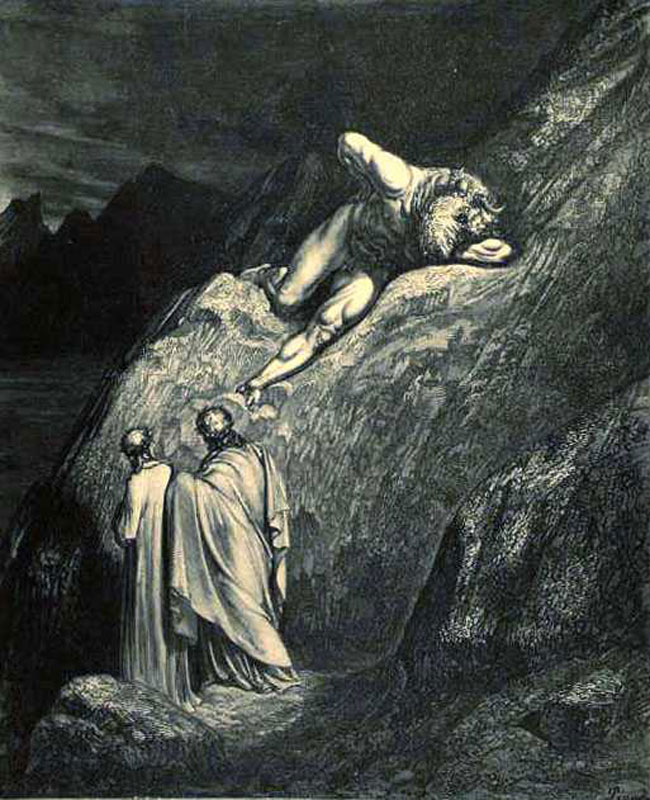Virgil points out to Dante the river below, where "those injure others violently, boil." It really doesn't get much more frightening than that. And yet, it is along these banks that they meet the Centaurs, who gallop around hunting with bows and arrows, consumed in their fury. They immediately come upon Dante and Virgil, and were it not for Chiron, the most human of the Centaurs and also Achilles' tutor, out two travelers would be pincusions. Chiron almost shoots them on sight, until he notices that Dante walks not as a soul, but of liveing flesh and blood. For a brief moment, the beast subsides and reason and humanity bubble to the surface. Virigl hastily explains that he has diplomatic immunity based on Beatrice's heavenly blessings to the quest. Chiron offers his own guide through the Centaurs' turf, knowing quite well that the others' human sides are buried much deeper and will most likely shoot first and ask second. Thus, Nessus, whose blood stained Hercules' cloak causing him to commit suicide, is their protector. Hard to imagine a more intimidating guide than the one who bested humanity's most famous hero.
While walking through this hell, they meet observe a pretty impressive collection of characters. Alexander the Great is here, as is Dionysius. Sesto, son of Pompey is mentioned as are several other ruthless tyrants and rulers, including Atila the Hun.
The cacophany of rage, so exemplified by the raging river of blood, is deafening on these pages. It almost hurts my ears to read this canto. It is a sign of impressive poetic skill that Dante perfectly manifests the inner rage that blinds all other senses. I leave you with Dore's minotaur.

No comments:
Post a Comment